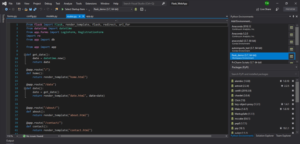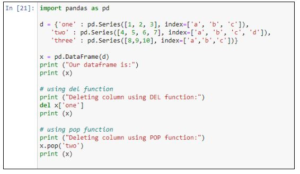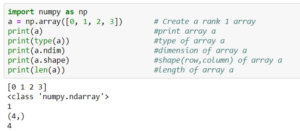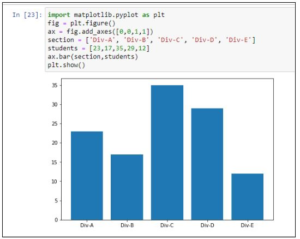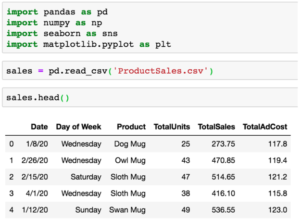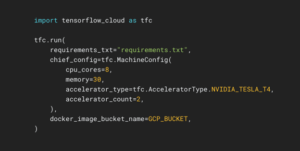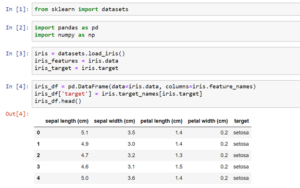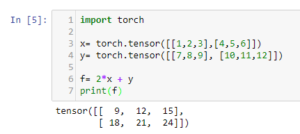In the world of coding, there are many languages to choose from, but Python has become popular and a top choice for some businesses, even in the healthcare sector – Its popularity stems from not only its accessibility but also its numerous benefits.
Let’s explore why Python development is gaining popularity in healthcare and how it's driving positive change in the industry.
What is Python Development?
Python development is the process of using the Python programming language to create custom healthcare software development applications, tools, and solutions. Python is a high-level, interpreted language known for its simplicity, readability, and versatility, making it an ideal choice for a wide range of development tasks.
With its rich ecosystem of libraries, frameworks, and tools, Python enables developers to build complex and scalable solutions efficiently.
Python development encompasses various activities, including:
- Writing code
- Testing
- Debugging
- Deploying applications across different platforms
In the healthcare sector, data scientists use Python mainly to build machine learning algorithms and software applications for:
- Genomic studies
- Drug discovery
- Predictive analytics
- Improving the efficiency of hospital operations
- Performing medical diagnostics
6 Benefits of Python Development in the Healthcare Sector
1. Rapid Prototyping
Rapid Prototyping refers to the swift reaction of prototype applications or minimum viable products (MVPs) to validate ideas and concepts in the healthcare sector. It involves quickly building functional prototypes with minimal code to gather feedback from stakeholders, refine requirements, and iterate on the design before full-scale development.
Python’s simplicity and readability allow developers to translate healthcare concepts into code rapidly. Using Python frameworks like Flask or Django, developers can create basic web applications with minimal configuration.
2. Data Analysis
In Python, data analysis uses Python’s libraries and tools to analyze healthcare data for insights and decision-making. Healthcare organizations generate vast amounts of data from electronic health records (EHRs), medical imaging, wearables, and IoT devices.
Python’s Libraries for Data Analysis:
- Pandas
Pandas is a popular Python library for data manipulation and analysis. It provides data structures like DataFrame and Series, along with functions for cleaning, transforming, and analyzing tabular data.
- NumPy
NumPy is a fundamental library for numerical computing in Python that offers powerful array manipulation capabilities, mathematical functions, and linear algebra operations, making it essential for data analysis and scientific computing tasks.
- Matplotlib
Matplotlib is a plotting library for creating static, interactive, and publication-quality visualizations in Python, which provides a wide range of plotting functions to visualize data distributions, trends, and relationships.
- Seaborn
Seaborn is built on top of Matplotlib and provides a high-level interface for creating attractive and informative statistical graphics. It simplifies the process of visualizing complex datasets and facilitates the exploration of relationships between variables.
- SciPy
SciPy is a library for scientific computing in Python that builds on NumPy, offering additional mathematical functions, optimization algorithms, signal processing tools, and statistical routines, making it valuable for advanced data analysis and modeling tasks.
3. Machine Learning
Machine learning in Python development uses Machine learning in Python development.
In the healthcare sector, machine learning algorithms analyze vast amounts of patient data, medical images, and clinical records to assist in diagnosis, treatment planning, and patient monitoring.
Check out the three machine learning frameworks:
- TensorFlow
TensorFlow is an open-source machine learning framework widely used for building and deploying deep learning models. It offers extensive support for neural networks and allows for scalable deployment across various platforms, including mobile devices and cloud environments.
- Scikit-Learn
Scikit-learn is a versatile machine-learning library in Python that provides simple and efficient tools for data mining and analysis.
The machine learning framework offers a wide range of algorithms for classification, regression, clustering, dimensionality reduction, and model evaluation, making it suitable for both beginners and experienced data scientists.
- PyTorch
PyTorch is an open-source machine learning framework known for its flexibility and dynamic computational graph construction. The framework offers a seamless development experience for building neural networks and supports imperative programming, enabling rapid prototyping and experimentation.
4. Seamless Integration
Python's seamless integration in the healthcare sector is a result of its compatibility with various systems and technologies commonly used in healthcare settings.
From electronic health record (EHR) systems to medical imaging devices and telemedicine platforms, Python can interface with different software and hardware components, enabling smooth data exchange and interoperability.
Python's extensive libraries and frameworks provide tools for connecting to databases, parsing data formats, and communicating with external APIs, making integration tasks more manageable for developers.
5. Automated Processes
Python's automated processes use Python scripts and tools to streamline routine tasks and workflows in the healthcare sector.
By automating repetitive and time-consuming processes, Python enhances operational efficiency, reduces errors, and frees up healthcare professionals to focus on patient care and higher-value activities.
Here’s how Python’s automated processes typically work:
- Identifying tasks: Healthcare professionals identify tasks or workflows that are repetitive or prone to human error and are suitable for automation.
- Writing scripts: Python developers write scripts or programs using Python's syntax and libraries to automate identified tasks. These scripts can range from simple to complex, depending on the nature of the task.
- Execution: Once developed, Python scripts are executed either manually or scheduled to run at specific times or intervals using task scheduler tools or cron jobs.
- Data processing: Python scripts interact with data sources such as databases, spreadsheets, or APIs to retrieve, manipulate, and process data as needed.
- Task completion: Python scripts perform the defined tasks automatically, such as generating reports, updating records, sending notifications, or performing data analysis.
- Error handling: Python scripts include error-handling mechanisms to detect and handle exceptions or errors that may occur during execution, ensuring smooth and reliable automation.
- Monitoring and maintenance: Healthcare organizations monitor automated processes to ensure they run smoothly and address any issues or updates as needed to maintain optimal performance.
6. Innovation in Healthcare
Python's innovation in healthcare stems from its versatility, extensive libraries, and ease of use, enabling developers to create a wide range of applications to address healthcare challenges.
Check out how Python fosters innovation in healthcare:
- Diverse Applications: Python enables the development of diverse applications in healthcare, from electronic health record (EHR) systems and telemedicine platforms to medical imaging solutions and wearable devices.
- Healthcare Imaging: Python's libraries like OpenCV and scikit-image facilitate advanced image processing and analysis for medical imaging applications.
- Telemedicine and Remote Monitoring: Python's web development frameworks like Django and Flask enable the creation of telemedicine platforms and remote monitoring systems. Python-based telemedicine solutions facilitate virtual consultations, remote patient monitoring, and telehealth services, expanding access to healthcare and improving patient outcomes, especially in underserved areas.
Conclusion
The benefits of Python development in the healthcare sector are undeniable. From rapid prototyping to efficient data analysis, advanced machine learning, seamless integration, automated processes, and fostering innovation, Python empowers healthcare professionals to tackle complex challenges and drive positive change.


